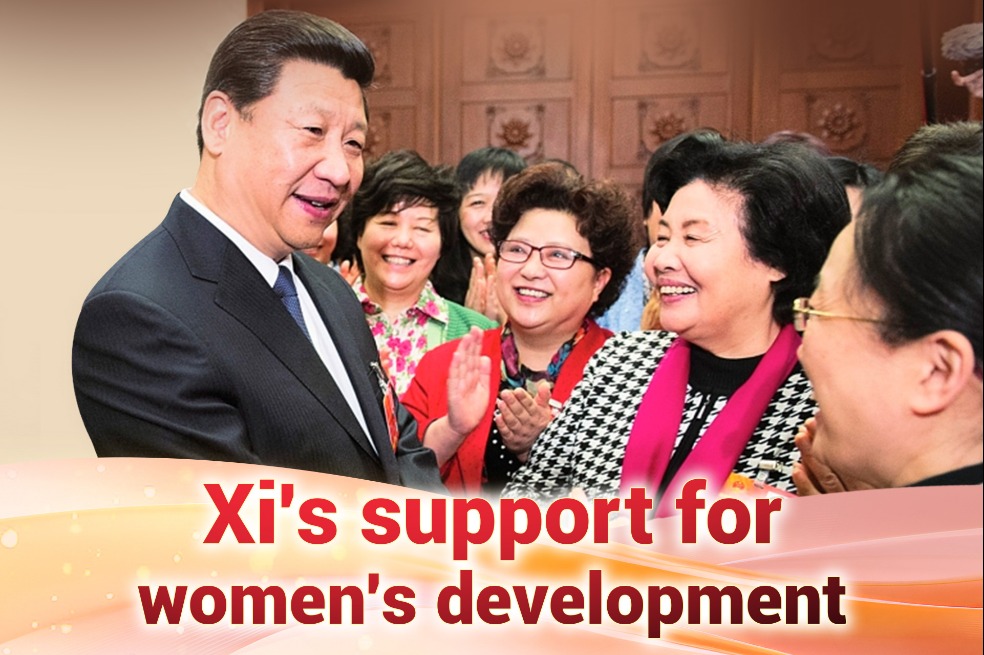Execs optimistic about China's growth


A1: The past year has indeed been a turning point for China and China's position in the world: the country has successfully brought the COVID-19 pandemic under control; after two years of tensions with the US, it has adopted a new concept of "dual circulation", combining self-sustainability domestically and higher added value in exports; China in 2020 has succeeded in its fight against absolute poverty.
The country has also succeeded in maintaining, and even expanding, its position as the manufacturing and export powerhouse of the world, thanks to the strong resilience of its supply chain and its industrial and logistics ecosystem, while the rest of the world was enduring the painful consequences of the pandemic.
We expect a significant change in the formulation of the objectives for China going forward: no growth target in the 14th Five-Year Plan, and less binding objectives, also reflecting the uncertainty in a still COVID-19-dominated world. Deemphasizing growth is emblematic of the new course toward a more qualitative development: catching up in key technologies and reducing dependency on foreign patents and industrials.
The increase in an already high R&D spending, and the emphasis on scientific and technological innovation, particularly with breakthrough technologies e.g., quantum computing, also demonstrates a China preparing a better future and leveraging its powerful domestic market.
A2: The most striking long-term objective for China is the pledge toward a net-carbon zero country by 2060. So far, the 14th Five-Year Plan is setting a 18 percent reduction in carbon emission intensity of GDP growth over the period, which is in line with previous plan objectives. China therefore remains committed to the Paris agreement goal, an endeavor that many countries are not meeting these days, which is worth noting. The plan, however, is setting a more ambitious energy intensity objective, which will affect the way every industrial and commercial facility is planning its operations in the next five years.
Given the amount of coal that China is starting with, carbon capture and storage is highlighted as one of the technologies that China must pioneer to meet its objectives. Along with hydrogen, we can expect that China will take the lead in piloting, demonstrating and hopefully making some innovations commercially and industrially viable. While this remains to be seen, the magnitude of the carbon neutralization challenge in China suggests that many companies, domestic and foreign, can leverage the audacious objective to develop new approaches and roll them out to the world.
A3: In line with the "dual circulation" strategy, China is setting up ambitious objectives for the development of domestic technologies and industrial resources, particularly in areas where it is still somewhat dependent on foreign resources. This, of course, is partly meant to curb vulnerabilities revealed by the unilateral US measures against Chinese companies. But this is also emblematic of a new stage of development where China is gradually claiming leadership in areas needed to support its own domestic development as well as contributing to maintain globalization, in a more multi-polar approach.
The advantages of a planned economy are clear: determined establishment of new R&D platforms and laboratories, increase collaboration between public research and SOEs/POEs, accelerate development of 5G infrastructure to enable faster development of use cases, including artificial intelligence in the areas of mobility, healthcare, etc.
While the focus on developing indigenous technologies might sound controversial internationally, it should on the contrary stem new opportunities for investment in China, to support this new phase of development. Given the size and the growth of the Chinese market in consumer as well as industrial products alike, localizing supply chains, and/or integrating them in ASEAN + China/Korea and Japan.
A4: For the last few years, the negative list and the FTZ negative lists have continuously been reduced, further opening up new sectors for investments. In FTZ, the reduction of items has always served as pilots for more general opening, therefore any signal of new trials is positive, and is interpreted as such by foreign investors. In the last two years, Roland Berger has consulted with many clients sometimes addressing an ambiguous positioning issue with China: on the one hand, China is quite often one of the biggest outlets for product and services, as well as a sizeable supply chain contributor.
Yet, US-China trade war and associated tariffs and company bans, and uncertainties created by a more sophisticated, more competitive Chinese market, seeking less dependency on foreign technologies, have cast some doubts in corporate boardrooms. The resilience of the Chinese supply base in 2020, the strong recovery of the Chinese market as an outlet, and its perspective of growth, encourage further investments in China, for China. We already see it happening with Roland Berger's multinational clients in the specialty chemical, packaging, automotive equipment and software, aerospace equipment, medical devices sectors, for example.
A5: China's pledge toward a net-carbon zero China by 2060 is a major milestone in the fight against climate change and positions China as a role model. We expect a more precise agenda for the execution of this pledge in the coming years, while the 14th Five-year Plan already has set a slightly more ambitious energy intensity reduction objective. We believe that China's pledge will play a major role, domestically and internationally, in innovation to meet the objectives. This will in turn push State-owned and private companies, as well as multinationals, to not only abide by the zero-emissions target, but actually innovate to claim leadership in emissions reduction technologies and services.
Our company Roland Berger achieved a carbon neutral position in 2020, and we have set further ambitious goals: net zero carbon by 2028. In order to ensure transparency around reduction targets, Roland Berger has committed to the Science Based Targets Initiative.
We are convinced that the world needs a new sustainable paradigm that takes the entire value cycle into account. The reduction of emissions, innovations in the use of resources, the reorganization of supply chains, and new production methods are becoming decisive competitive factors. As a global consultancy, we are also fully aware of the impact of our business on the climate, directly and through the advisory with our clients. Not only do we want to lead by example in our industry, but we also want to demonstrate effective ways of doing business sustainably to our clients.
Therefore, we are placing solutions for sustainable management at the center of its consulting approach. As part of this strategy, our company has identified four innovative areas in which it has bundled its competencies globally: sustainability and climate action, smart mobility, robust organizations, and next-generation manufacturing. We have built teams in each of these fields to support clients in a wide range of projects, from supply chain reorganization and technology strategies to sustainable financing issues.
























